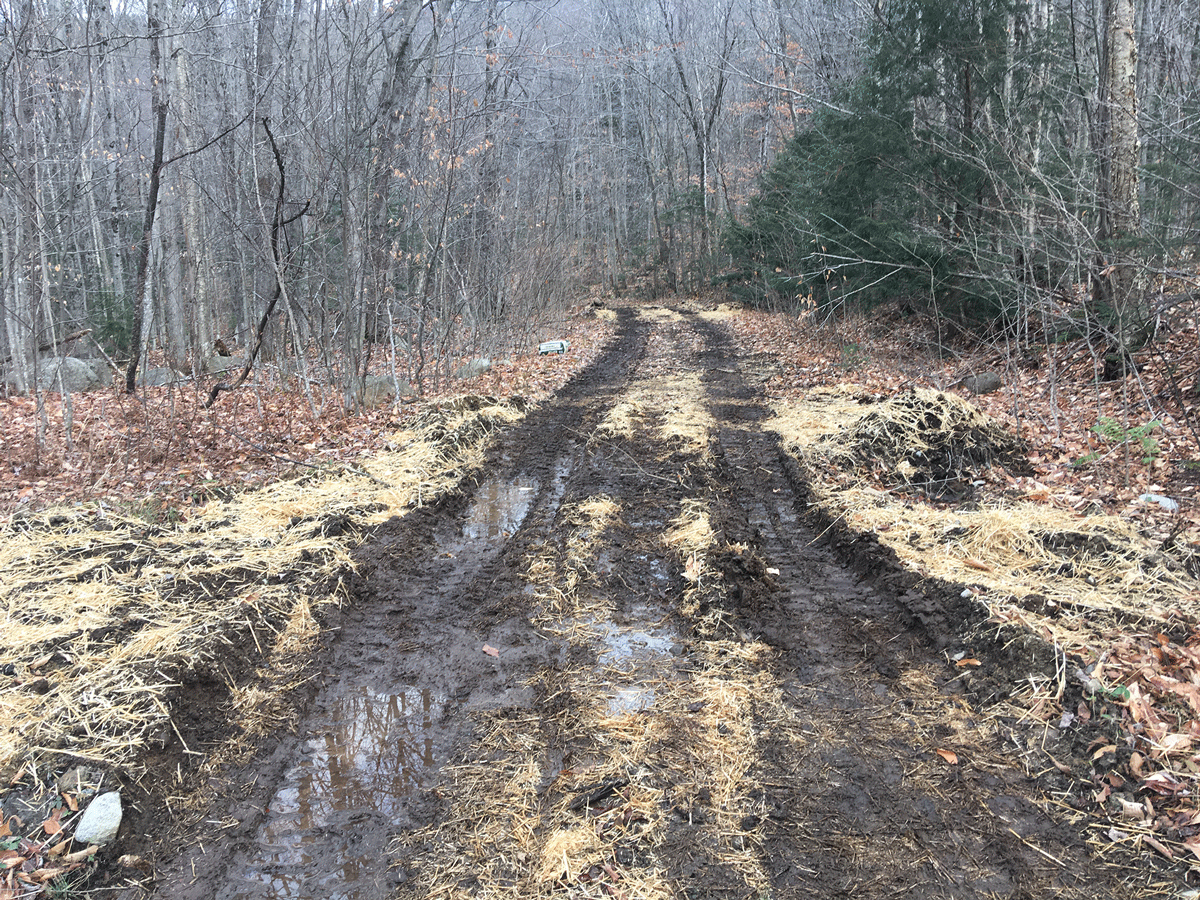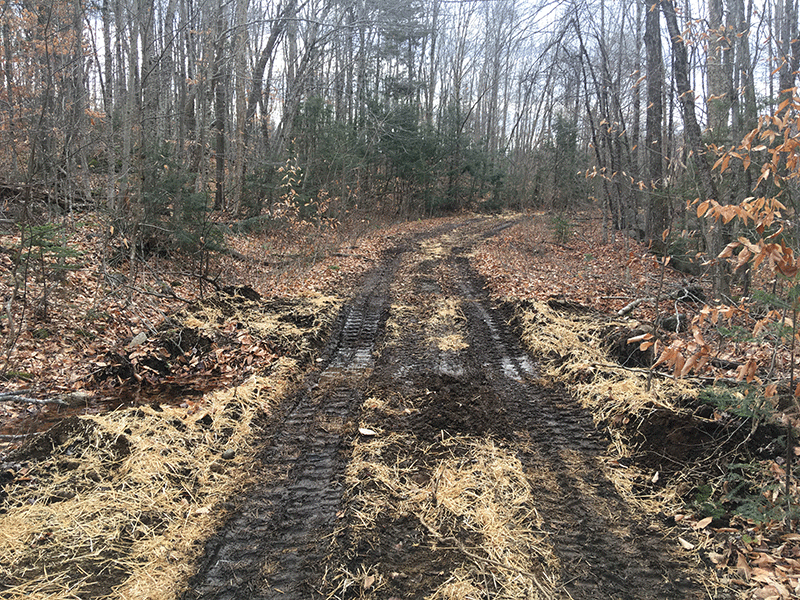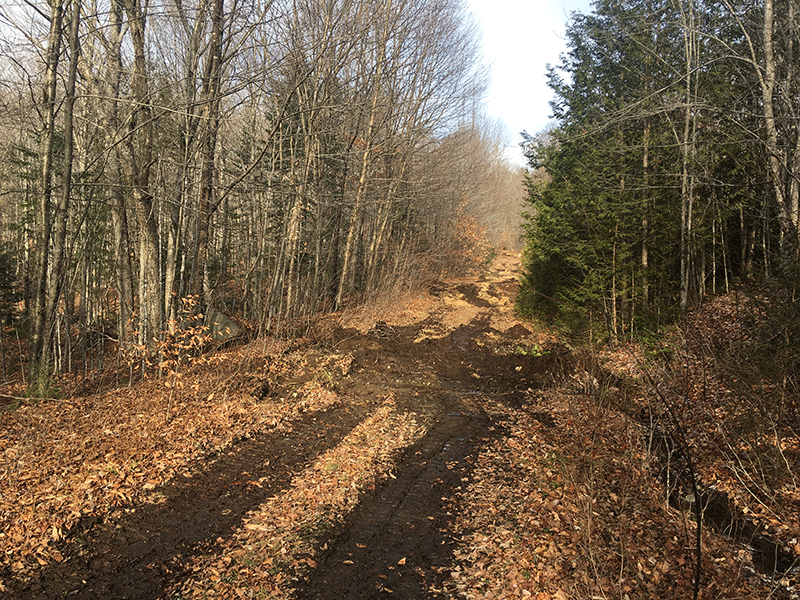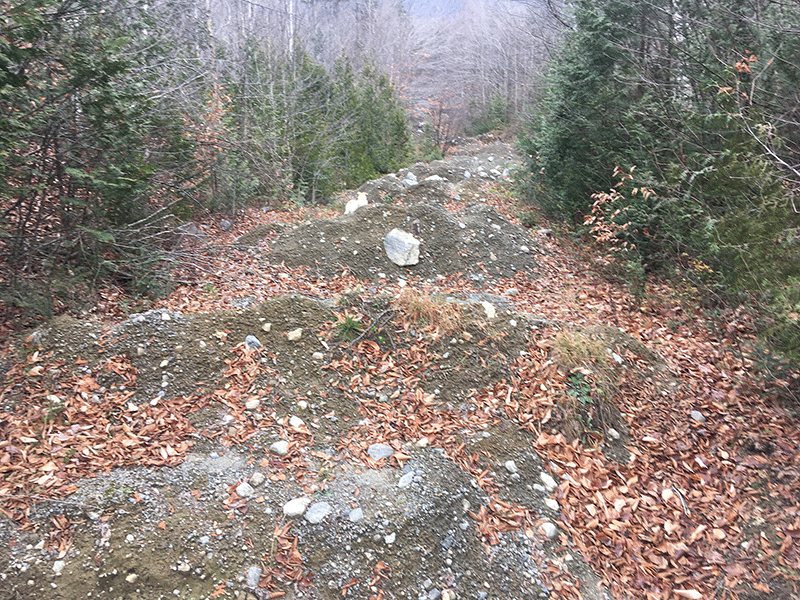On January 20, 2023, Protect the Adirondacks filed a lawsuit challenging the reconstruction by the Department of Environmental Conservation (DEC) of a previously closed and reclaimed road in the High Peaks Wilderness Complex. DEC’s road construction activity in the High Peaks violates the Adirondack Park State Land Master Plan (Master Plan) which prohibits roads in Wilderness areas.
In 2019-2020, DEC implemented a Road Reclamation and Rewilding Project that involved decommissioning and reclaiming former logging roads on newly purchased lands in the MacIntyre East tract in the High Peaks Wilderness. DEC undertook this work pursuant to an approved 2019 Work Plan that authorized use of heavy machinery, which is allowable under the Master Plan in Wilderness lands within three years after classification to remove non-conforming structures such as roads. In 2021, DEC reversed course and, without a Work Plan, began undoing its prior reclamation work and reconstructed one section of road. Heavy rains in December 2021 limited how much of the road that DEC was able to rebuild before winter set in, but by our measurements DEC managed to rebuild nearly one mile of a former logging road.
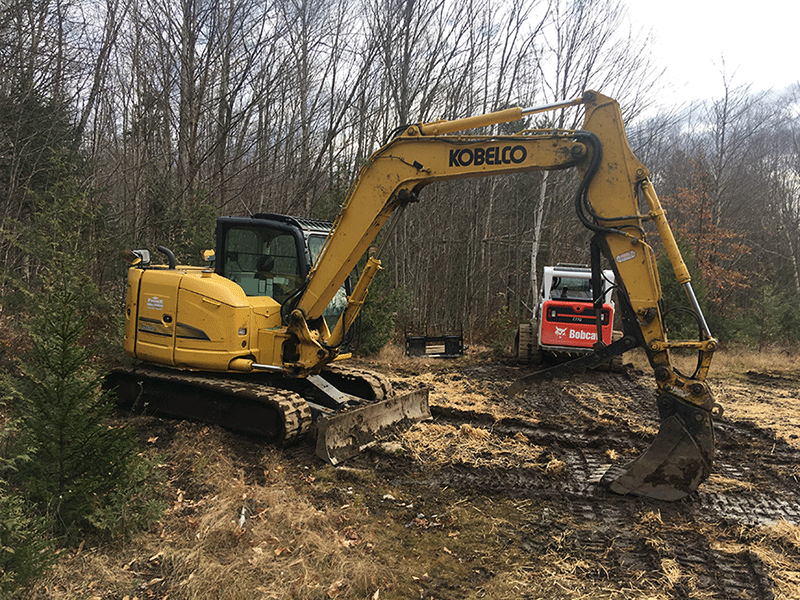
Heavy machinery used by the NYS Department of Environmental Conservation to rebuild a portion of a road in the High Peaks Wilderness Area.
In 2021 and 2022, Protect the Adirondacks conducted field inspections to document the extent of the road reconstruction (see reports here and here). We reported our findings to DEC and the Adirondack Park Agency (APA) (see letters here and here). The APA, without sending staff to the site to investigate, declined to bring an enforcement action for this violation of the Master Plan and Wilderness Area protections. Since the APA declined to take any action, Protect the Adirondacks was left with no other option other than to challenge DEC’s unlawful road rebuilding project in court. The lawsuit seeks an injunction prohibiting any further road construction by DEC and directing it to reclaim and rewild the rebuilt road in accordance with the 2019 Work Plan.
“This case places protection of Wilderness areas in the Adirondack Park front and center. In 2021, DEC made the remarkable decision to undo and reverse its road reclamation and rewilding project in the High Peaks Wilderness Complex by reconstructing nearly one mile of a previously reclaimed road in the MacIntyre East Tract. Roads are prohibited in a wilderness area, and DEC’s reconstruction of the road violates both the Adirondack Park State Land Master Plan and the Unit Management Plan (UMP) for the High Peaks Wilderness. Regrettably, the Adirondack Park Agency refused to take any action to address this blatant violation. Consequently, Protect the Adirondacks is turning to the courts to ensure that the High Peaks Wilderness continues to provide the Wilderness experience that the public expects and deserves,” said Christopher Amato, Conservation Director and Counsel at Protect the Adirondacks, the lead attorney on this case.
The MacIntyre East Tract was formerly owned by Finch, Pruyn and Company, and was purchased as part of the Boreas Ponds deal. A UMP amendment was approved in 2018, which did not authorize retaining any of the roads in question in any form. In 2019, the DEC authorized a Work Plan for reclamation of abandoned logging roads in the MacIntyre East tract area. The Work Plan stated: “Work will be completed to remove culverts, bridges and reclaim the road surface, on grades. This project will improve the recovery of the natural resources and enhance the Wilderness Experience of future users.”
The Work Plan further stated: “The intent of the work is to remove the larger infrastructure of the road system, hasten naturalization and support a future trail system. By removing the bridges and allowing the road system to start the recovery process, we provide a blank slate for the future of trail development. By designing the trail system from the start, to be a hiking trail system and not relying on using old roads, the Department is situating itself to create a sustainable trail system that blends with the forested surroundings and enhances the hiker’s overall trail experience.” The intent of the Work Plan was clearly to dismantle and reclaim the existing logging road systems in the MacIntyre East area.
DEC claims that the 2019 Work Plan authorizes its road reconstruction, yet there is nothing in 2019 Work Plan that authorizes DEC to reverse its road decommissioning and reclamation work and to reconstruct a previously reclaimed road.
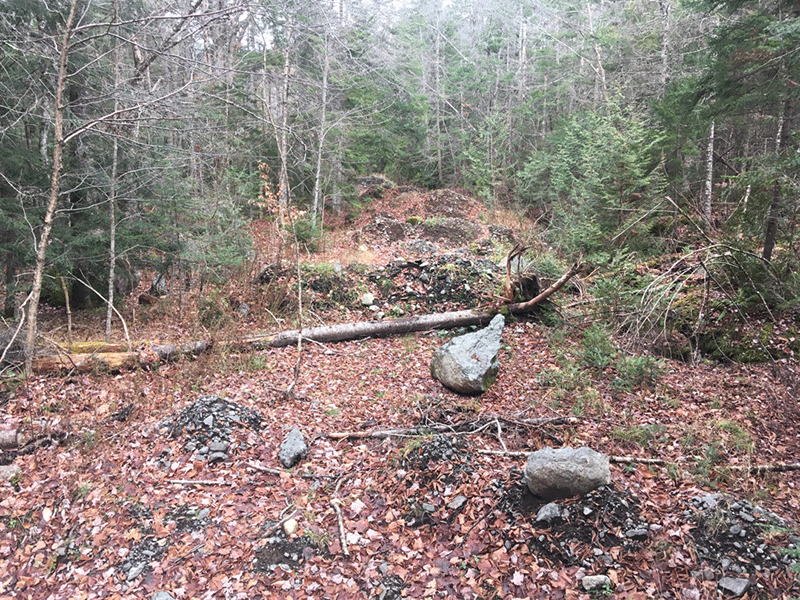
Two pictures that show where work undertaken in 2019-2020 created pits and mounds that dismantled the long linear roadway and fostered forest regeneration and ecological recovery.
In May 2021, the DEC and APA were found by the state’s highest court to have violated the State Constitution’s Forever Wild clause by constructing extra-wide snowmobile trails on Forest Preserve lands classified as Wild Forest. Unchastened, just a few months later, DEC subverted the Master Plan by reconstructing a road on Forest Preserve lands classified as Wilderness. In both cases, the APA stood by and did nothing to protect the Forest Preserve from DEC’s unlawful actions.
The DEC and APA have struggled to build a comprehensive Forest Preserve management program over the last two decades. The Forest Preserve in New York State is the finest state land system in the U.S., yet its management has never come close to matching these spectacular lands. It’s vital that state agency leaders stop making up rules as they go, stop bending and distorting long established policies and practices, and stop subverting Forest Preserve law for their political purposes.
The rest of us have to live by the rule of law, the DEC should have to do the same.
Click here to read the full lawsuit.
Click here to see Exhibit A
Click here to see Exhibit B
Click here to see Exhibit C
Click here to see Exhibit D
Click here to see Exhibit E
Click here to see Exhibit F
Click here to see Exhibit G
Click here to see Exhibit H
Click here to see Exhibit I
Click here to see Exhibit J
Click here to see Exhibit K
Click here to see Exhibit L
Click here to see Exhibit M

